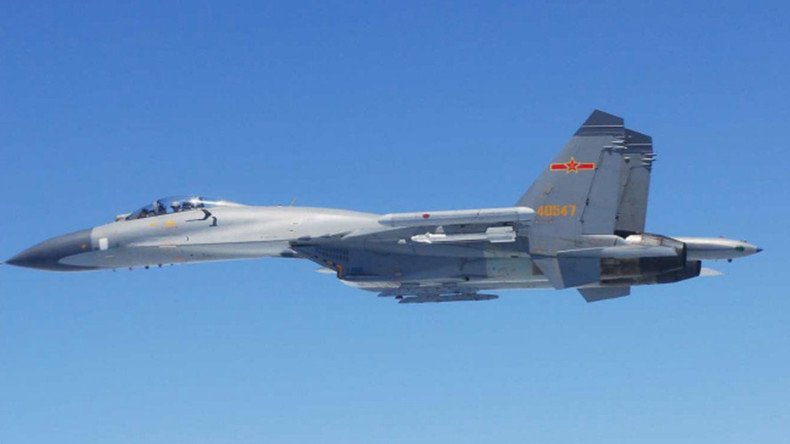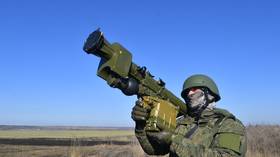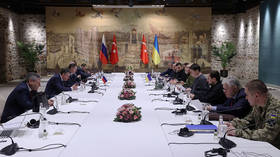Chinese military approaches technological ‘near-parity’ with NATO in air domain – think tank

Beijing’s military development has placed it on ‘near-parity’ with Western nations, with some weapons having no equivalent, a British think tank says. Meanwhile, NATO members are lagging behind in the development of advanced military capabilities.
The warning comes from the International Institute for Strategic Studies (IISS), one of the world’s leading defense research institutes, which presented its annual assessment (the Military Balance 2017) on the world’s armed forces on Tuesday. China’s growing capabilities and the danger they pose to Western dominance were the focus for IISS director John Chipman, who presented the assessment in London.
“We now judge that in some capability areas, particularly in the air domain, China appears to be reaching near-parity with the West. Also Beijing is now beginning to offer for export some of its modern military systems,” he told the audience.
One particular weapon the institute sees as a possible threat is the PL-10 short-range air-to-air missile, which “only a handful of leading airspace nations are able to develop,” according to Chipman.
Not only does it have superb homing capabilities and poses a threat to Western aircraft in a hypothetical armed conflict with China, Beijing also offers it for export, which would “complicate the operations of any Western air force” anywhere it proliferates, he said.
Another example is a long-range air-to-air missile that was noticed in a photo of a Chinese Su-27 derivative last year. The missile may be a two-stage weapon with a range of 300km, similar in capabilities to the creation of Russian defense producer Novator, known variously as the KS-172, K-100, and AAM-L.
One of #China’s new air-to-air missiles has no Western equivalent #MilitaryBalance#Security | https://t.co/xErdeeZMqA
— IISS News (@IISS_org) February 14, 2017
“When it enters service, this new system will hold at risk large high-value targets like tankers and AWACS aircraft, platforms that traditionally would safely loiter outside the range of current air-to-air weapons,” Chipman warned.
He said that China’s continued military modernization and its new willingness to export domestically-designed advanced military systems mark China as “the single most important driver for the US defense deployments.”
“China’s military progress highlights that Western dominance in the field of advanced weapons systems can no longer be taken for granted,” Chipman warned. “An emerging threat for deployed Western forces is that with China looking to sell more abroad, they may confront more advanced military systems in more places, and operated by a broader range of adversaries.”
Graphic: Top 15 defence budgets 2016 #MilitaryBalance | https://t.co/Aayl9znj2Dpic.twitter.com/nUE3r5Avau
— IISS News (@IISS_org) February 14, 2017
The IISS director also marked Russian defense modernization – particularly the recent use of Kalibr cruise missiles in its Syrian campaign – as a matter of concern.
Chipman said that in 2016, only two European NATO allies, Greece and Estonia, met the alliance target for defense spending, with Britain and Poland falling below the benchmark. The assessment was denied by the UK Defense Ministry, leading to a comparison of calculation methodologies used by NATO and the IISS respectively.
Counting to two: analysing the NATO defence-spending target #MilitaryBalancehttps://t.co/vAfMUQQmNMpic.twitter.com/dLwOXfI4xI
— IISS News (@IISS_org) February 14, 2017
IISS considers European defense spending to be “modest” compared to its economic output.
“If all 20 European NATO countries were in 2016 to have met the 2 percent GDP target, their defense spending would have needed to rise by over 40 percent,” Chipman remarked.
According to IISS data, total global military spending fell by 0.4 percent in real terms from 2015 to 2016, largely due to reductions in the Middle East. The Chinese military budget in 2016 was $145 billion. The US remains the biggest defense spender, with a $604.5 billion budget last year.












